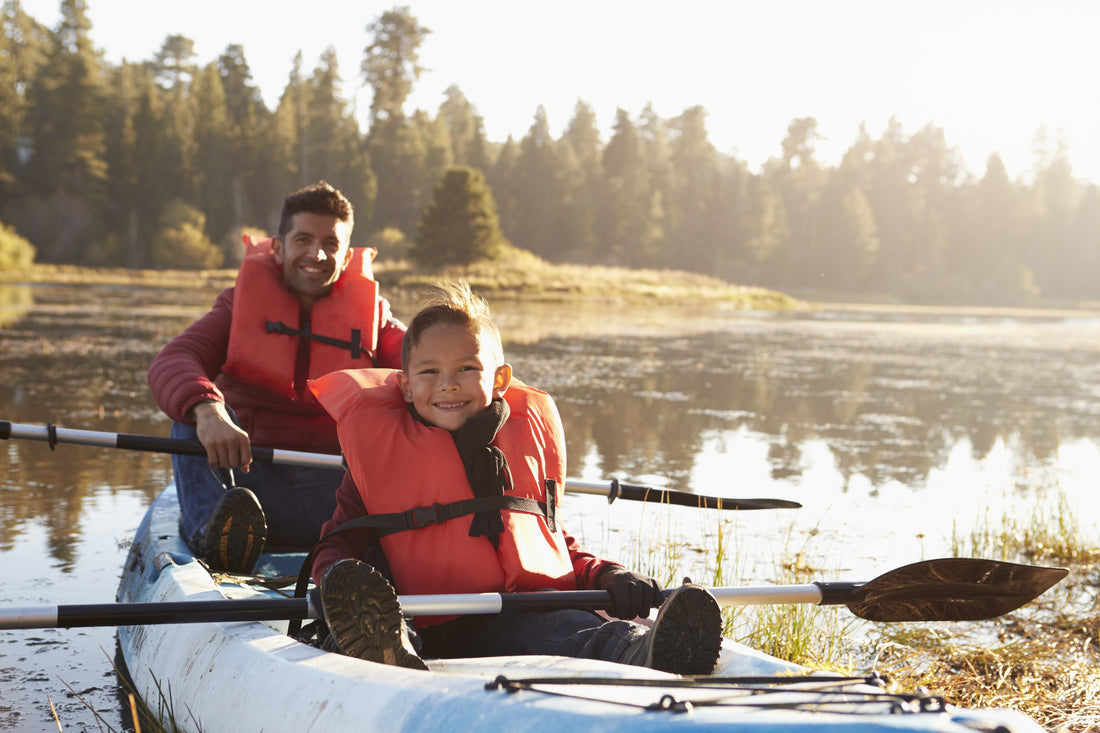Warmer weather is right around the corner for most of us, which opens up lots of opportunities to get out on the water! Kayaking is even more enjoyable in fair weather when you can observe the beauty of your area’s natural environment in full bloom. That being said, it’s still important to go out prepared and safe to ensure you’ll be able to enjoy future adventures.
Kayak safety is important whether you’re planning for an extreme rapids trip, an ocean angling adventure, or a relaxed river paddle. Peruse these tips to ensure you’re prepared for a fun and safe outing!
Essential Kayak Safety Equipment
Personal Flotation Device (PFD)
Personal Flotation Devices (PFDs) are a kayak safety staple. If you capsize, you’ll be lucky you had one on. Keeping your head above the water with minimal effort during an emergency is key for maintaining energy and focus. They are also a nice layer of insulation in colder waters.
The US Coast Guard requires that you have a PFD with you whenever you’re out on the water, so be sure to invest in one before you get out there. Additionally, they aren’t much use if you don’t have it on prior to an emergency, so make sure it fits and you actually put it on BEFORE you paddle.
First Aid Kit
Just like you might have a travel kit stashed in your car, you should have some type of first aid kit for your kayak, as well. There are paddling-specific first-aid kits available but a homemade one will also work fine if you can’t find one. Make sure you have this kit properly stored in a marked, waterproof dry bag so nothing is damaged when you need it.
Bilge Pump
This is a more advanced type of bail that’s very effective in clearing a large amount of water out of your kayak. You can most easily find a simple hand pump that will make your life easier than sponging or scooping up the excess water. If you’ve capsized, a bilge pump will be key to getting back on track with your trip once you’ve re-entered the boat.
Tow Line
A tow line is good to have on hand, especially if you’re travelling with a kayaking party. Tow lines allow you to assist a fellow kayaker who has become injured or overly tired. If you kayak alone, you should still be prepared with your own in case you need to rely on a passing boat to get you out of a jam.
Communication Device
From whistles and signals to phones and radios, you’ll want to come prepared with some way of getting other people’s attention in case of an emergency. We recommend having a whistle on you as well as an electronic device with longer range in case you can’t reach anyone with just noise. VHF radios are quite reliable in case you’re somewhere with limited cell coverage.
Appropriate Protective Gear
You should be dressed for submersion whenever you go to kayak, but you should also be sure to protect yourself from elements outside of the water, as well. As we move into warmer weather, the sun is a more constant companion on these paddles. Being equipped with a quality SPF sunscreen at the minimum is key. It is also recommended to bring a hat, sunglasses, and lightweight long sleeves and pants to ensure you don’t risk harmful UV exposure.
Kayak safety is essential to all kayakers. The best, most enjoyable paddles are those that you come prepared for. Never underestimate being ready for the worst regardless of how many successful trips you have under your belt. Know your limits, be aware of your surroundings and weather forecasts while you’re out, and it never hurts to take a friend along with you for an extra pair of hands. Happy paddling!

